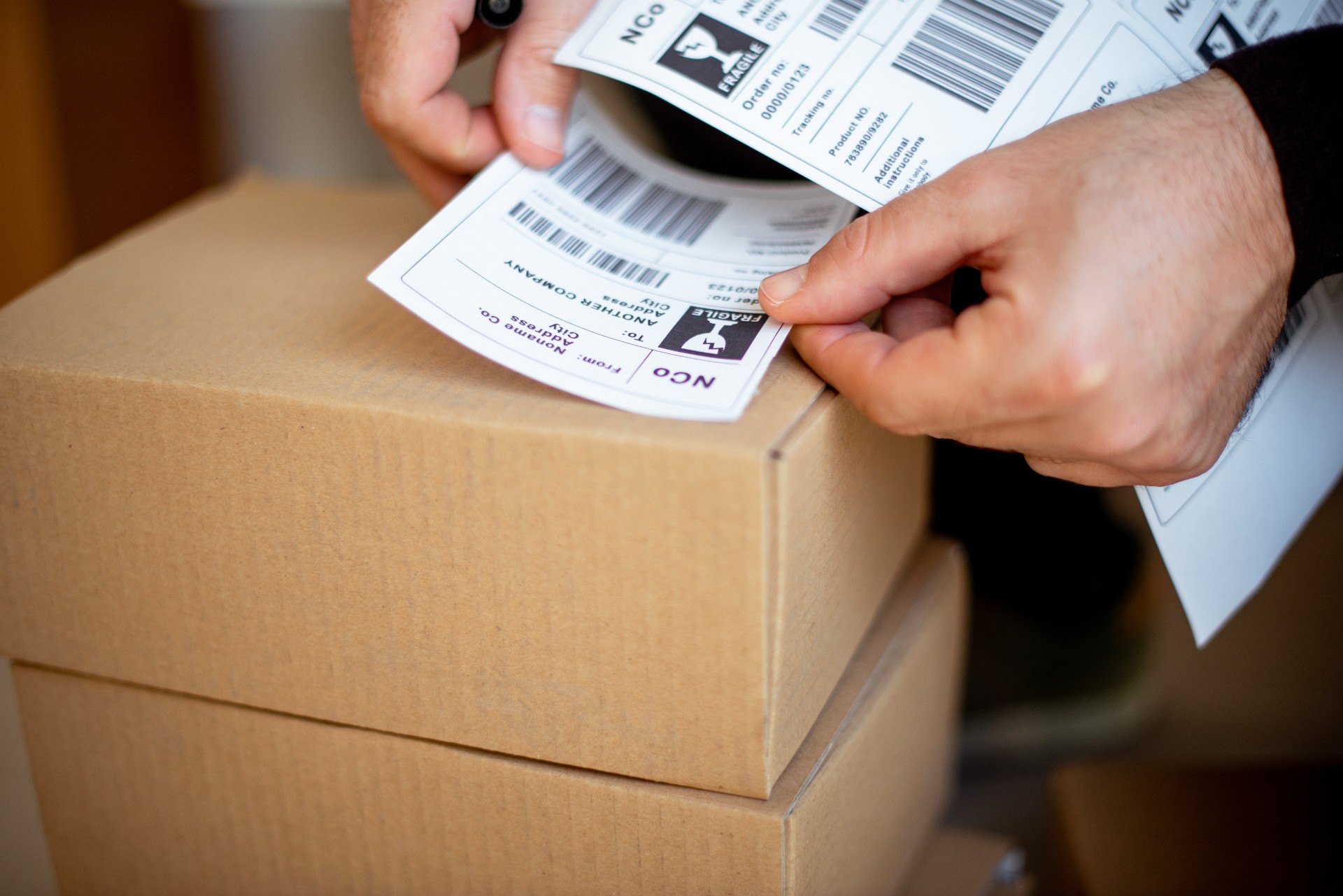In the world of logistics, shipping labels are more than just stickers; they are the backbone of accurate deliveries, real-time tracking, and efficient inventory control. Whether you’re running a booming e-commerce store or managing a supply chain operation, mastering shipping labels can save you time, reduce costs, and improve customer satisfaction. In this in-depth guide, we’ll walk you through every aspect of shipping labels from types and components to printing methods and compliance standards.
What Is a Shipping Label?
A shipping label is a crucial component in the logistics process that contains all the necessary information required to get a package from the sender to the recipient. These personalized shipping labels are scanned at various points during transit, making it possible to track shipments, prevent errors, and ensure timely delivery.
Shipping labels usually include:
Sender and recipient addresses
Tracking number
Barcode
Shipping class (e.g., ground, express)
Weight and dimensions
Special handling instructions
Importance of Shipping Labels in Logistics
Shipping labels are essential for operational efficiency. Here’s why they matter:
Facilitate automation: Scannable barcodes enable automated sorting and tracking.
Improve accuracy: Human errors are reduced when information is standardized.
Enable tracking: Customers and businesses can track packages in real-time.
Support compliance: They fulfill legal and carrier-specific shipping requirements.
Enhance branding: Custom shipping labels can reinforce brand identity.
Types of Shipping Labels
Understanding different types of shipping labels helps in choosing the right one for your needs. Below are the most commonly used types:
1. Standard Shipping Labels
These are generic labels used for most domestic and international parcels. They typically measure 4″ x 6″ and contain all basic shipment data.
2. Hazardous Material Labels
These labels meet DOT, IATA, and OSHA regulations and are mandatory for transporting dangerous goods. They include clear warning signs and symbols.
3. Return Shipping Labels
These labels come pre-printed or are generated upon request to streamline returns, especially for e-commerce businesses.
4. International Shipping Labels
Used for cross-border shipments, these labels often include customs declarations, harmonized codes, and detailed sender/recipient information.
5. Custom Shipping Labels
Custom-designed to reflect brand identity, they often include logos, taglines, and colors that differentiate a company’s packaging.
Essential Elements of a Shipping Label
A compliant and functional shipping label must include the following key elements:
1. Sender and Recipient Information
Full name
Complete address
Contact number
2. Barcode and Tracking Number
Scannable barcodes allow real-time tracking and status updates. This is the core feature that enables logistics transparency.
3. Shipping Method
Indicates how the package should be handled: Ground, Express, Overnight, Priority, etc.
4. Package Weight and Dimensions
Many carriers use this data for billing purposes and to optimize loading.
5. Special Instructions
Fragile, perishable, or “this side up” instructions help handlers treat the package correctly.
How to Print Shipping Labels Correctly
Proper printing ensures durability and readability during transit.
1. Choose the Right Printer
Thermal printers are preferred due to smudge-proof, water-resistant results.
Inkjet and laser printers are suitable for low-volume needs but may smudge.
2. Select High-Quality Label Paper
Use adhesive labels with permanent backing to prevent peeling during shipping.
3. Use Label Printing Software
Apps like ShipStation, EasyPost, Shippo, and Stamps.com integrate with major e-commerce platforms and automatically populate label fields.
Best Practices for Shipping Label Placement
Placement can affect whether a label is readable or damaged in transit. Follow these best practices:
Place the label on the largest flat surface of the package.
Avoid corners, seams, or openings.
Do not wrap labels around edges—this affects scannability.
Use a clear adhesive pouch or tape for extra protection if needed.
Shipping Label Compliance and Carrier Guidelines
Each carrier has specific requirements regarding label layout, barcode format, and placement.
UPS
Labels must be 4″ x 6″
Barcode must be vertical
No obstructions or folds
FedEx
Requires FDX, GRI, or Ground barcodes
International labels include Commercial Invoice
USPS
Allows for smaller label sizes (e.g., 3.5″ x 5″)
Labels should be legible and affixed firmly
DHL
Global standards include customs information
Use of thermal printers is recommended for international legibility
Non-compliance can result in delays, fines, or returned shipments. more
Benefits of Custom Shipping Labels
Going beyond functionality, custom shipping labels provide added value for businesses looking to build trust and brand recognition.
Reinforce branding: Consistent visuals across packaging build customer trust.
Boost unboxing experience: Labels designed with flair elevate perception.
Enable upselling: Include QR codes that direct users to promos or product pages.
Enhance professionalism: Clients see your brand as more polished and reliable.
Automating Shipping Label Generation
Large-scale operations benefit from automation. Here’s how:
Integrate with e-commerce platforms like Shopify, WooCommerce, or Magento.
Use APIs to generate labels in bulk based on order triggers.
Implement barcode scanning at the warehouse level for real-time status updates.
Automation significantly reduces manual errors and expedites fulfillment.
Environmental Considerations
As sustainability becomes a key concern, many companies are shifting to eco-friendly shipping labels. These include:
Recyclable label materials
Soy-based inks
Linerless label rolls to reduce waste
Biodegradable adhesives
Opting for green alternatives demonstrates a brand’s commitment to sustainability while staying compliant with packaging regulations.
Choosing the Right Shipping Label Supplier
Whether you’re buying in bulk or need on-demand prints, consider these factors:
Compatibility with your printers
Label adhesive strength
Weather and abrasion resistance
Customization options
Turnaround time for bulk orders
Leading suppliers include custom product packaging, Avery, OnlineLabels, Zebra, and ULINE, among others.
Conclusion
The value of an accurate, well-printed, and properly placed shipping label cannot be overstated. It bridges your operations with your customers’ expectations, ensuring timely, traceable, and satisfactory deliveries. Investing in the right label design, technology, and supplier will not only streamline logistics but also enhance brand credibility and reduce operational friction.













Leave a comment